39 F. high in the Twin Cities Friday (3:40 pm).
24 F. average high on January 23.
2 F. high on January 23, 2014.
-17 F. morning low on January 23, 2014.
2" snow on the ground at MSP International Airport.
January 23, 1968: A rare severe thunderstorm hits the Twin Cities and left a coating of ice an inch thick. 10 thousand homes were without power.
January 23, 1950:
Ice storm over southwest Minnesota. Ice on telephone wires from 1/3 to
1.5 inches. Bismarck, North Dakota had 17 inches of snow. A Northern
Pacific passenger train derailed at Detroit Lakes with no injuries.
January 23, 1925:
Solar eclipse seen across northern Minnesota during the morning. The
Duluth Herald reported that chickens were "puzzled by the dark morning"
and didn't leave their roosts. Source: Twin Cities National Weather
Service.
Clipper Potential
I
always wanted to open up a drive-thru barber shop for busy commuters -
call it The Alberta Clipper. Sadly I now have hair where I just don't
need it, like some Transylvania science experiment gone wrong. TMI. And
not one of my better business ideas.
Fast-moving vortices of low
pressure sailing out of Canada are notoriously fickle; snow amounts hard
to predict. A jog of 50 miles in the storm track can make the
difference between flurries - and 6 inches of flurries.
We study
half a dozen models looking at the trends (north/south/wetter/drier) but
in the end it comes down to a coin flip whether we'll be in the
heaviest snow band. The humbling reality: every clipper is different and
every weather map is maddeningly unique. The models help, but they're
far from foolproof.
We may still wind up with a plowable snow
early Sunday from Alexandria and St. Cloud to the Twin Cities, something
in the 1 to 3 inch range. Snow lovers are increasingly desperate; we'll
take what we can get
Expect 30s for highs thru Friday (mid-40s Wednesday!) but 6 subzero lows in a row arrive the first week of February.
I know it doesn't look like January out there but do NOT write winter off just yet.
Clippers and Nor'Easters.
Tonight's clipper may drop 1-3" of snow from near Alexandria and Wadena
to Little Falls, St. Cloud and the Twin Cities, most of this snowy
burst over by breakfast Sunday. Meanwhile a southern storm pushes up the
east coast, dropping the heaviest snow from the suburbs of New York
City to Boston.
Clipped Again.
You can see the system pushing up the eastern seaboard into New
England, a fast-moving clipper painting a narrow carpet of white from
the Dakotas and Minnesota into the Ohio Valley by Sunday night. Source:
NOAA.
Hints of March Into Next Friday, Then An Arctic Relapse.
We've been spoiled, and the mild spell continues most of next week with
a streak of days in the 30s, even low to mid 40s Wednesday. Tonight's
clipper drops a couple inches of slushy snow; another snow event
possible Friday as sharply colder air approaches. By Super Bowl Sunday
there will be no doubt in your mind it's still the dead of winter.
F-F-February.
The first week of February will bring back memories of mid-November and
early January, as many as 5 or 6 nights in a row below zero possible in
the metro area. Temperatures should rebound the second week of February
- no substantial snow predicted between January 31 and February 8. GFS
data courtesy of NOAA.
Cities That Have Seen More Snow This Winter Than The Twin Cities.
Thanks to D.J. Kayser at Media Logic Group for passing this on. More
snow in Dalhart, Texas than Minneapolis/St. Paul? That's just wrong.
Check out the running snowfall totals, to date below:
| Total (Oct 1-Jan 22) | Average To Date | Departure |
| Minneapolis |
20.3
|
30.6
|
-10.3
|
| Dalhart, TX |
21
|
9.2
|
11.8
|
| Scottsbluff, NE |
34.3
|
19.8
|
14.5
|
| Rapid City, SD |
27
|
16.3
|
10.7
|
| Colorado Springs, CO |
25.2
|
17.4
|
7.8
|
| Flagstaff, AZ |
29.1
|
45.2
|
-16.1
|
Dribs And Drabs of Snow. Dr. Mark Seeley has more on Minnesota's growing snow drought at
WeatherTalk: "...
This
week brought a light dusting of snow to many Minnesota communities.
Most received less than an inch, although a few observers reported 1-2
inches. This trend is disconcerting for snow lovers as the seasonal
snowfall totals continue to lag behind normal, and especially when
compared to the numbers from the past two winters. So far this month
only a few places have seen over 10 inches of snowfall, and when
considering the seasonal snowfall totals going back to last November
most places in the state have seen less than 25 inches..."
Climate Models: February into April.
All but one of NOAA CPC (Climate Prediction Center) models show a mild
bias February into April. Global ocean temperatures are literally off
the scale, and some of this warm water coupled with a persistently zonal
west to east flow should keep us from experiencing a persistently
bitter late winter similar to last winter. Famous last words.
The Economic Impact of 2014's Severe Weather Events. Here's a link to an interesting infographic, courtesy of
Quartz.
MIT Study Finds Carbon Sequestration May Not Be As Effective As Expected. Pumping CO2 deep underground, where it will remain (forever)? Sounds like a tall order.
Gizmag has the details of a new study; here's a clip: "
Carbon
sequestration may not, according to researchers at MIT, be the panacea
that some had hoped. A recent study, partially funded by the United
States Department of Energy, has found that far less carbon dioxide than
the ideal prediction of 90 percent may be turned into rock when
sequestered. This means much might eventually escape back into the
atmosphere..."
Here Are The Most Expensive Countries In The World To Live In. Unless money is falling out of your pockets you might want to avoid relocating to Norway or Switzerland, according to
Huffington Post: "
You
might think life here in America is expensive. But it turns out that
when compared to the rest of the world, the U.S. doesn't even make the
list of the 20 most expensive countries to live in. Thanks to a new
infographic from Movehub,
a site that provides information to those looking to move abroad, we
can see clearly whose wallets have it worst off. The graphic includes a
number of maps showing which nations have the highest cost of living,
based on the average price of consumer goods in each country..."
Why You Feel There's Too Much TV To Watch, In One Graph. Vulture has a fascinating story, an explanation of why your DVR is smoking; here's a clip: "...
Using
Nielsen data, Landgraf’s research department at FX Networks determined
that in 2014, at least 328 scripted first-run prime-time programs aired
on ad-supported or subscription-based broadcast, cable, and streaming
networks in the U.S. (PBS wasn’t included.) Broadcasters still churn out
plenty of programming (124 scripted shows), while streaming players
such as Amazon, Netflix, and Hulu are now very much a factor (24 shows)..."
TODAY: Clouds increase, dry and mild during the day. Winds: West 5-10. High: 37
SATURDAY NIGHT: Snow developing, slick roads late. Low: 26
SUNDAY: Snow tapers. Coating to 2" early with slippery travel. High: 30
MONDAY: Quick clipper, another inch? Wake-up: 19. High: 33
TUESDAY: Partly sunny, feels like March. Wake-up: 27. High: 37
WEDNESDAY: What January? Mild spike. Late day rain shower possible Wake-up: 29. High: 43
THURSDAY: Intervals of sun, cooler. Wake-up: 28. High: 33
FRIDAY: Couple inches late. Sharply colder. Wake-up: 24. High: 31
* Waking up to temperatures near 0F one week from today.
Climate Stories...
Risky Business: Agriculture, Labor and Manufacturing Industries Face Economic Risk from Climate Change.
I had a chance to attend yesterday's luncheon presentation at the
Hilton with Greg Page and Hank Paulson (thanks to Department of
Economics at the University of Minnesota). Former Treasury Secretary
Paulson mentioned that climate change is usually discussed in the
context of science and the environment, when it's also a significant
business story, presenting new risks (and opportunities) for existing
business models. The solution revolves around adaptation, resilience,
encouraging local, homegrown solutions and not waiting for Congressional
science Luddites in Washington D. C. (my words, not his) to take
action. Here's an excerpt from
Friday's press release: "...
The
Midwestern United States faces potential disruptions to its
agricultural economy, and dangerous levels of heat in many of its
largest cities, if climate change continues unabated, according to a new
report released today by the Risky Business Project. Heat in the Heartland: Climate Change and Economic Risk in the Midwest
details how extreme heat - the signature impact of a changing climate -
could transform the Midwest's economy. Absent significant adaptation,
overall crop yields will likely decline, potentially shifting growing
patterns for major commodity crops to the north and putting individual
farming communities at risk. Left unchecked, a changing climate will
also increase the incidence of extreme heat, particularly in the
Midwest's southernmost cities like St. Louis, Des Moines and
Indianapolis, leading to significant public health and safety risks..."
Study: Climate Change Could Hammer Iowa Ag, Manufacturing. Here's an excerpt of an important story at
The Des Moines Register: "...
Greg
Page, chairman of Minneapolis-based Cargill Inc., and one of the
business leaders on the Risky Business advisory committee, said Thursday
the report is a "wake-up call to begin having a conversation" on the
impact of climate change. "If we stand still, and fail to be thoughtful
in building resilience, we could see a weather scenario that would
produce an outcome that's dire," Page said. "But it's our job to make
sure that isn't what happens." One thing the report doesn't reflect, he
said, is changes farmers may make to offset changes to growing
conditions — through seed genetics, irrigation and other approaches..."
Climate Change Impact on America's Heartland. Think farmers are nervous about the weather today? Give it a few more years. Here's an excerpt of a story at
The Washington Post: "...
Kate Gordon,
lead author of the new Risky Business report, and head of the energy
and climate change program at Next Generation, explains that if
Midwestern agriculture sustains such losses, food production may move
north. “But for those people, in those states, that’s their economy,
it’s a pretty severe impact,” she says. The new report also says the
Midwest could experience more heat deaths, costlier electricity, and a
decline in overall workforce productivity..."
13 Of The 15 Hottest Years Have Happened Since 2000 - What Are The Odds Of That Happening Without Global Warming? Here's a
Salon link to a Climate Central video and excerpt: "...
So, the people at Climate Central
made an animation in which they examine just how likely it is for us to
have experienced so many record-breaking years in such a short period
of time if human-influenced global warming isn’t to blame. The odds?
1-in-27 million. Here’s how they got to that number..."
Mitt Romney Has Been Talking A Lot About Climate Change Lately.
I give him a lot of credit for looking at the data and making an
informed decision, even if it means losing support of some on the right.
Here's a clip from
NationalJournal: "...
The
former Massachusetts governor affirmed his belief that man-made climate
change is real in a series of public appearances this week and
highlighted global warming as a key challenge that the next president
will need to address. "I'm one of those Republicans who thinks we are
getting warmer and that we contribute to that," Romney said at an event
on Wednesday in Salt Lake City. Romney added that "real leadership" is needed to rein in air pollution created from coal-fired power generation..." (Photo credit: AP Photo/Gregory Bull, File.)
Mitt Romney and Rand Paul Are Going To Make Climate Change a 2016 GOP Issue. Here's the intro to a story at
The New Republic: "
It took one day for the party of climate change denial to rediscover science—a few of them, anyway. Mitt Romney, who is considering his third presidential run, told a Utah audience, “I’m one of those Republicans who thinks we are getting warmer and that we contribute to that,” arguing for “real leadership” to tackle rising carbon pollution. Then, 15 Republican senators voted in favor of a conservative climate amendment that said "human activity contributes to climate change." One of those senators was Rand Paul..."
 Sea Level Rise Faster Than Feared, Say Scientists
Sea Level Rise Faster Than Feared, Say Scientists. Here's an excerpt from a story at
RTCC: "...
Earlier
estimates put mean sea level rise in the 20th century at between 1.5
and 1.8 millimeters a year. Dr. Hay and her colleagues now think that,
between 1901 and 1990, the true figure was probably closer to 1.2 mm a
year. But since 1990, global sea level has risen by 3 mm a year on
average. So, in fact, the acceleration since then has been faster than
anybody expected - and this in turn could affect future projections..."
Earlier
estimates put mean sea level rise in the 20th century at between 1.5
and 1.8 millimetres a year. Dr Hay and her colleagues now think that,
between 1901 and 1990, the true figure was probably closer to 1.2mm a
year.
But since 1990, global sea level has risen by 3mm a year on
average. So, in fact, the acceleration since then has been faster than
anybody expected – and this in turn could affect future projections.
- See more at: http://www.rtcc.org/2015/01/22/sea-level-rise-faster-than-feared-say-scientists/#sthash.LHpuhH1P.dpuf
The Oceans Are Warming So Fast, They Keep Breaking Scientists' Charts.
Most of the excess heating is going into the world's oceans, and it's
still unclear what the long term implications are of this. Dr. John
Abraham at St. Thomas University has an article at
The Guardian; here's a snippet that made me do a double-take: "...
So
what do the new data show? Well, it turns out that the energy stored
within the ocean (which is 90% or more of the total “global warming”
heat), increased significantly. A plot from NOAA is shown above. You can
see that the last data point (the red curve), is, literally off the
chart. The folks at NOAA do a great job updating this graph every three
months or so. We can now say that the 2014 Earth had more heat (thermal
energy) than any year ever recorded by humans..."
Image credit: "
Ocean heat content data to a depth of 2,000 meters, from NOAA." Photograph: NOAA. You can find more data on ocean heating from NOAA
here.
"Hottest Year" Story Obscures Bigger News: Ocean Warming Now Off The Charts. ThinkProgress has more perspective on the rapid warming of the world's oceans; here's a clip: "...
Remember, more than 90 percent
of human induced planetary warming goes into the oceans, while only 2
percent goes into the atmosphere, so small changes in ocean uptake can
have huge impact on surface temperatures. That’s a key reason surface
temperatures haven’t appeared to warm as fast as many had expected in
the past ten years — although ocean warming has sped up, and sea level
rise has accelerated more than we thought , and Arctic sea ice has melted much faster than the models expected, as have the great ice sheets in Greenland and Antarctica..."
This Animation of Shrinking Sea Ice Is A Startling Illustration of Climate Change.
The Washington Post has the story; here's a snippet: "
More than any other region on Earth, you can see the effects of climate change in the Arctic, where the amount of perennial ice continues to decline. This new animation released Tuesday by the National Oceanic and Atmospheric Administration (NOAA) is a startling illustration of the toll climate change is taking on our planet..."
Image credit above: "
The animation above shows Arctic ice melt from 1987 to 1990, left, and 2010 to 2014, right."
We Need Sharper Questions For A Broken Climate Debate. Aaron Huertas has a story at
The Union of Concerned Scientists; here's an excerpt: "...
What may be surprising, however, is that Republican citizens have diverse views on climate science and related policy. Further, Zack Colman at the Washington Examiner just broke a story
about Congressional Republicans mulling ways to reformulate their
approach to climate issues. Still, journalists have their work cut out
for them when they interview politicians who reject mainstream climate
science. Can they do more to move our political dialogue past
scientifically inaccurate talking points? I think so..."
The Lesson Of The Hottest Year On Record: Climate Change Skeptics Will Never Believe The Science.
The Week
takes a look at something I'm encountering: a resistance to facts,
data, trends and science in general. Thinking is hard, conspiracy
theories are so much easier: "...
Since last year was the hottest one
ever recorded, and particularly given that it wasn’t even an El Nino
year (as record-breakers usually are), then one might imagine this would
be time for some soul-searching among the skeptics. Not remotely. If
anything, the doubters are unusually worked up in their denunciations of
climate hawks, climate scientists, and sympathetic media. It provides
an interesting window into the reasoning process of such people. The
pause has been memory hole’d for the moment, replaced with new arguments..."
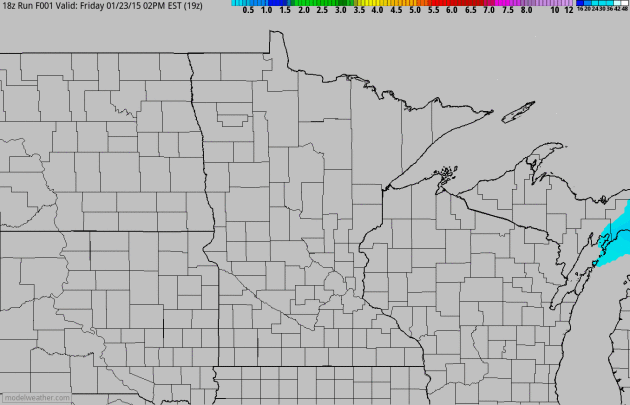
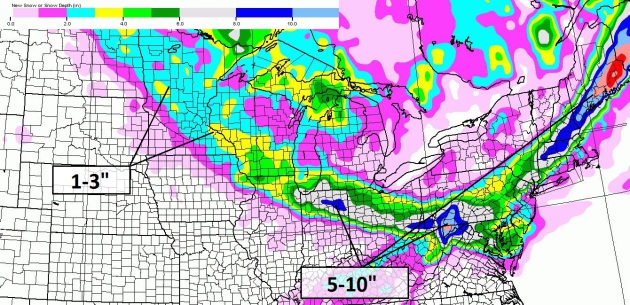
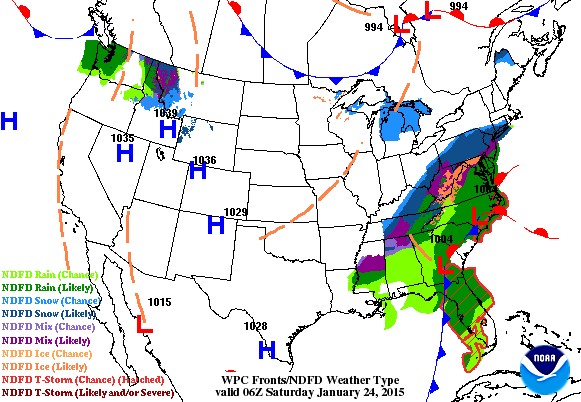
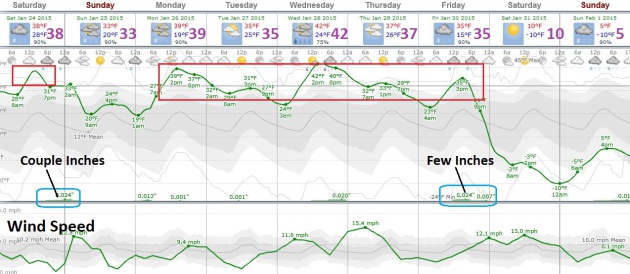
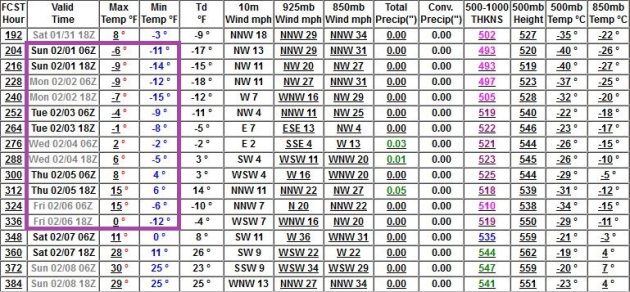
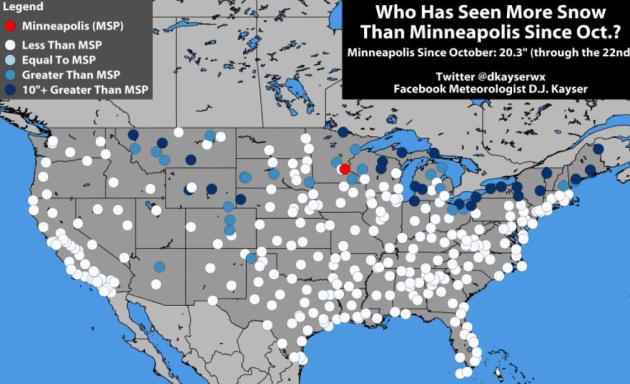
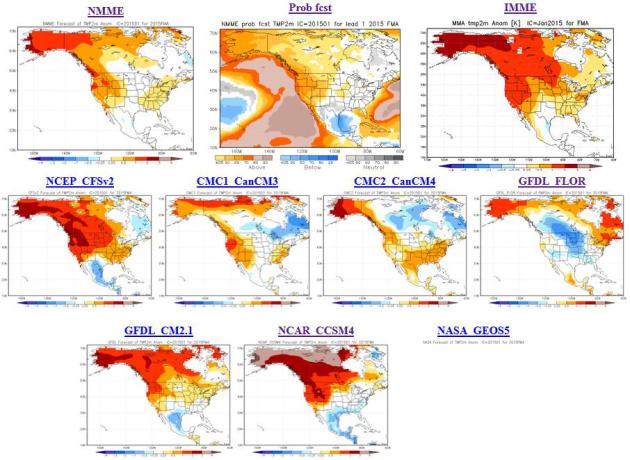
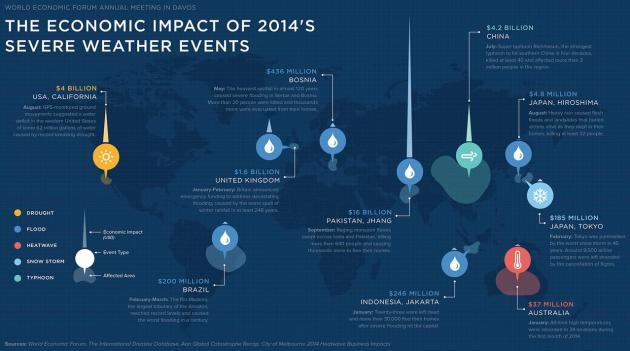
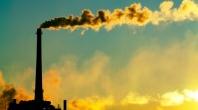


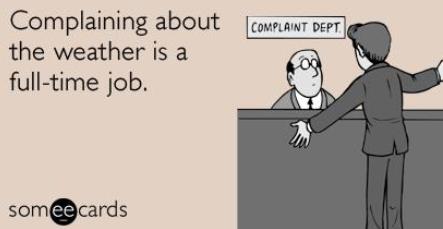


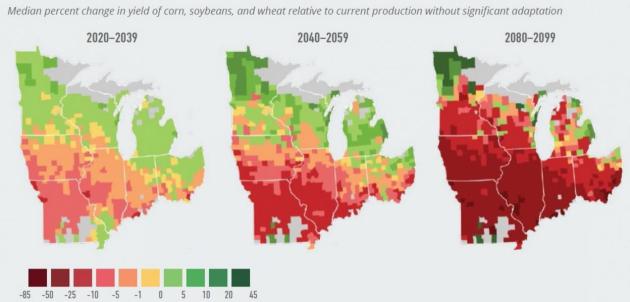
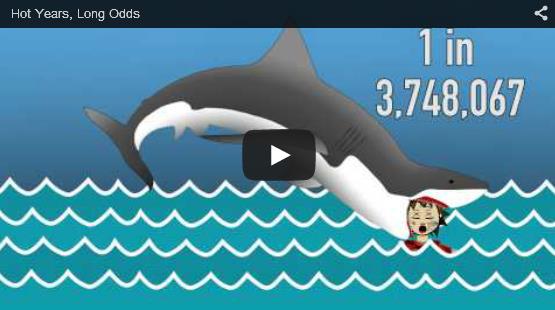
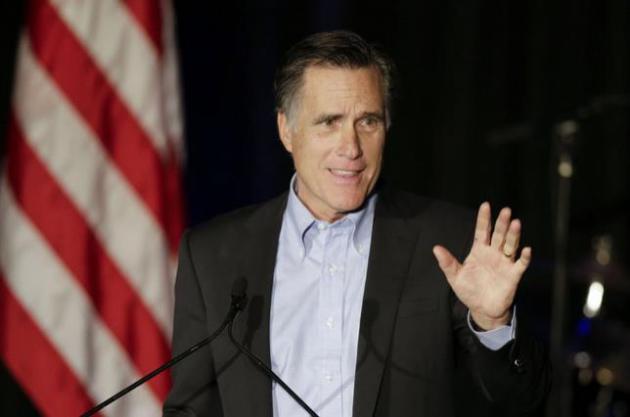
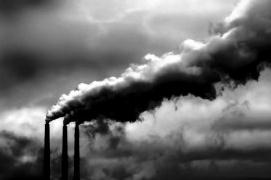
.jpg)
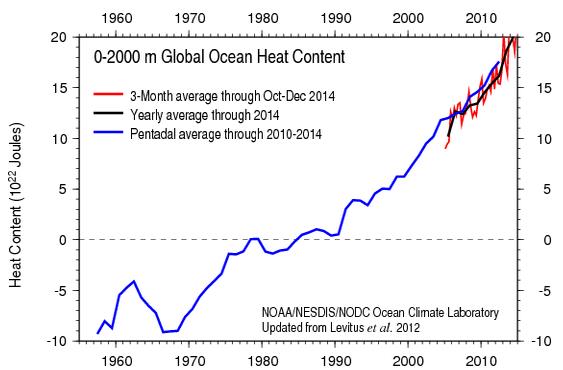
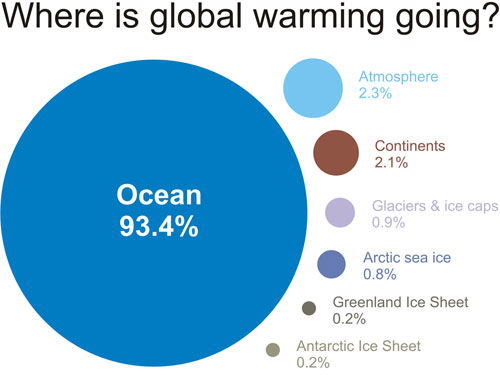


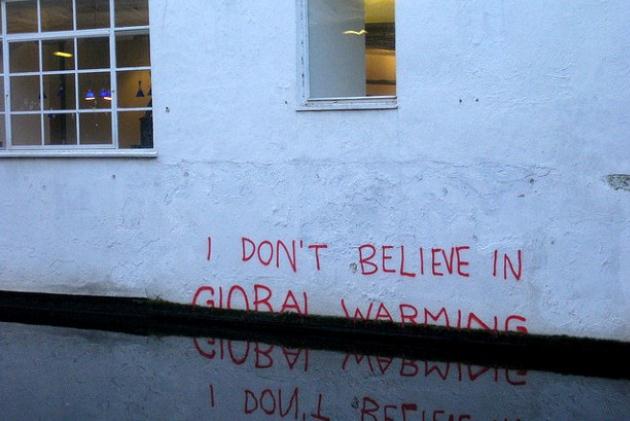
No comments:
Post a Comment